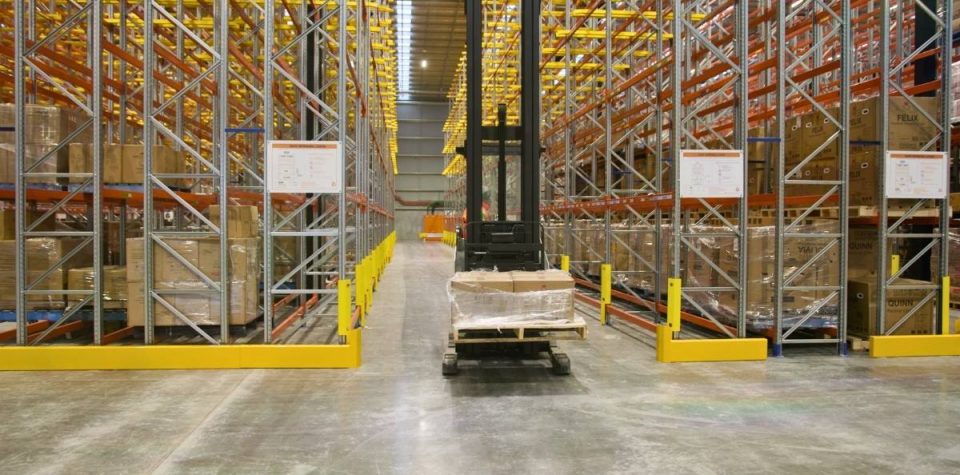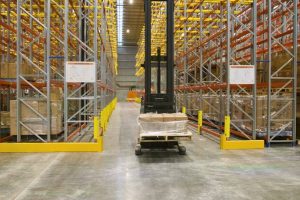Table of Contents:
- Precise Locations Matter
- The Australian Perspective
- Logistics Software Can Help You Choose the Perfect Setting.
Ensuring that your warehouse, transport yard and inward goods receiving facility are in the correct location is vital to optimal logistics efficiency.
As companies expand their operations, they need to recognize the crucial role that optimal warehouse and transport yard location plays in their logistics and delivery systems. The correct placement of your warehouses, truck loading compound and inward goods receiving facility is vital for optimising your supply chain and ensuring timely delivery to your customers.
In this article, we are going to explore the significance of warehouse location and how logistics software can enhance the operational efficiency of your business.
Precise Locations Matter
The location of your logistics facility can have a profound impact on your company’s logistics and delivery systems. A well-positioned warehouse or transport marshalling yard can lower transportation costs, improve delivery times, and enhance customer satisfaction.
Conversely, a poorly located warehouse can lead to increased transportation expenses, longer delivery times, staff dissatisfaction and unhappy customers.
Take a look at DIRFT
Before we dive into the importance of logistics facility placement here in Australia, let’s take a quick trip to the UK for a gander at the Daventry International Rail Freight Terminal (DIRFT) intermodal facility at Sheffield in the Midlands region. This facility is a prime example of how good placement of a logistics facility can maximise efficiency and reduce the effects of supply chain holdups.
Located adjacent to two motorways — the M1 and the M6 – and the West Coast Mainline rail network, the DIRFT facility is a hub location for a number of leading UK brands including Sainsbury’s, DHL, TESCO and the Royal Mail. Its proximity to several major cities gives the facility access to a large pool of employees, yet its rural location will allow for expansion as required.
We will return to look at DIRFT in greater depth in a future blog post. However, if you’d like to check the facility out, take a look at the place by clicking here.
The Australian Perspective
In Australia, warehouse location holds particular significance due to the vast distances between cities and the high cost of transportation. Choosing the correct warehouse location is vital for optimizing logistics and delivery systems. Companies must carefully evaluate warehouse placement to ensure efficient transportation of goods to and from customers.
No matter what your business enterprise or product is, your warehouse and transport assembly yard are integral aspects of your supply chain. And the correct location of your facility can have a significant bearing on the efficient running of your business by reducing the time, effort and costs, associated with making your service beneficial for both you and your customers.
Here are a few things to consider if you a looking at purchasing an existing logistics facility or building a new one from scratch.
Distance from your customers
The distance between your warehouse, customers and manufacturing facility is a key factor in establishing the best location for your business. When considering this, take into account the courier partners that you are likely to be using (both now and in the future) and how much it will cost to freight your products to and from your facility.
If you’re manufacturing at one or more different locations then the distances involved in getting your products to a central warehouse or transport location will need to be a factor too. If you have to choose between several locations, being closer to your direct customer base is the best option, especially if you have the capacity to store products for extended periods of time.
Space for storage…and expansion
Storage requirements are something that it is essential to think about in the early stages of planning your facility’s location. You’ll need to select a space that meets all your needs. These could include such things as:
- The amount of dedicated storage space required.
- Space for production and packaging facilities.
- Cold- or warm storage facilities.
- High security, dangerous goods or bonded warehouse space.
Proximity to transport networks and carrier services
A strong transport network and proximity to efficient and capable carrier service providers are essential for any warehouse. Finding a warehouse location with these in abundance is going to be a sort of Goldilocks situation – not too close, not too far, lots of space, etc. — but it will be worthwhile and it will pay for itself over time.
As well as road transportation, if yours is a business that ships internationally you should also factor in railway links and ports as transport options. Choosing a location with multiple (intermodal) transportation options is important because it will provide you with both long- and short-term options for diversifying your intake and distribution of goods.
Where is your workforce coming from?
Your workforce will be one of the key components to keeping your warehouse or logistics facility operating efficiently. So you’ll need to choose a warehouse location which has good transport links and is accessible by your employees. Opting for a facility that allows your staff to reach it with a minimum of effort and stress will mean that they are happier and more productive.
Look to the future
Over time, your business needs are likely to change. So it’s important to choose a location which you can easily adjust to your future needs. With this in mind, you should consider if the spaces you are looking at are flexible enough to adapt to future expansion or changing transport trends, and that there is room for you to make any required changes.
Logistics Software Can Help You Choose the Perfect Setting.
Logistics software makes it much easier to analyze your business’s data to identify optimal warehouse locations. By leveraging the data sets provided by logistics software, you can pick out spots that best suit your needs and eliminate places where you encounter obstacles.
Warehouse management software, for example, offers location-wise inventory visibility, specialized tools such as inventory management, and comprehensive supply chain overview capabilities. These platforms not only streamline your warehouse operations: they are also handy for both choosing and managing the locations in which you store, dispatch and receive goods.
Warehouse management software can help your company choose the most suitable positioning variants for your warehouse network by simulating different options and evaluating the results to see what will work for you.
So if you are in the market for a new location for your business, get in touch with one of our team here at TransVirtual and let us help you to choose your perfect setting.



